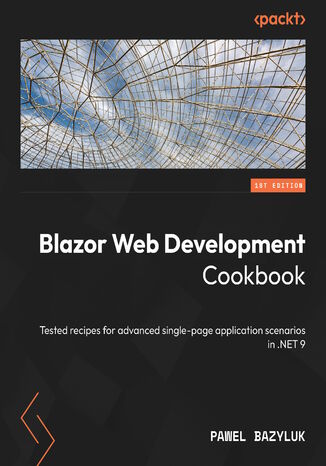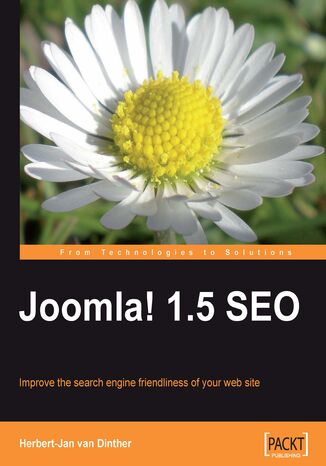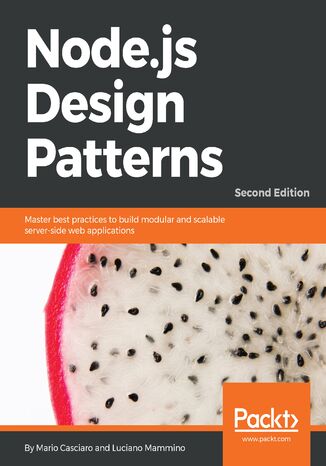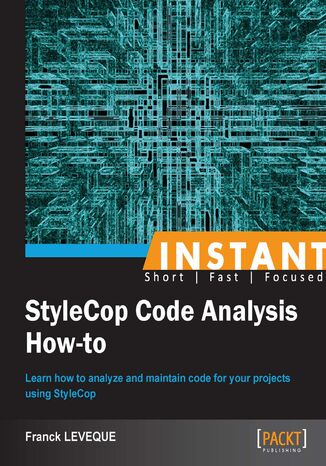Categories
-
- Bitcoin
- Businesswoman
- Coaching
- Controlling
- E-business
- Economy
- Finances
- Stocks and investments
- Personal competence
- Computer in the office
- Communication and negotiation
- Small company
- Marketing
- Motivation
- Multimedia trainings
- Real estate
- Persuasion and NLP
- Taxes
- Social policy
- Guides
- Presentations
- Leadership
- Public Relation
- Reports, analyses
- Secret
- Social Media
- Sales
- Start-up
- Your career
- Management
- Project management
- Human Resources
-
- Architektura i wnętrza
- Health and Safety
- Biznes i Ekonomia
- Home and garden
- E-business
- Ekonomia i finanse
- Esoterecism
- Finances
- Personal finance
- Business
- Photography
- Computer science
- HR & Payroll
- For women
- Computers, Excel
- Accounts
- Culture and literature
- Scientific and academic
- Environmental protection
- Opinion-forming
- Education
- Taxes
- Travelling
- Psychology
- Religion
- Agriculture
- Book and press market
- Transport and Spedition
- Healthand beauty
-
- Office applications
- Data bases
- Bioinformatics
- IT business
- CAD/CAM
- Digital Lifestyle
- DTP
- Electronics
- Digital photography
- Computer graphics
- Games
- Hacking
- Hardware
- IT w ekonomii
- Scientific software package
- School textbooks
- Computer basics
- Programming
- Mobile programming
- Internet servers
- Computer networks
- Start-up
- Operational systems
- Artificial intelligence
- Technology for children
- Webmastering
-
- Antology
- Ballade
- Biographies and autobiographies
- For adults
- Dramas
- Diaries, memoirs, letters
- Epic, epopee
- Essay
- Fantasy and science fiction
- Feuilletons
- Work of fiction
- Humour and satire
- Other
- Classical
- Crime fiction
- Non-fiction
- Fiction
- Mity i legendy
- Nobelists
- Novellas
- Moral
- Okultyzm i magia
- Short stories
- Memoirs
- Travelling
- Narrative poetry
- Poetry
- Politics
- Popular science
- Novel
- Historical novel
- Prose
- Adventure
- Journalism, publicism
- Reportage novels
- Romans i literatura obyczajowa
- Sensational
- Thriller, Horror
- Interviews and memoirs
-
- Archeology
- Bibliotekoznawstwo
- Cinema studies
- Philology
- Polish philology
- Philosophy
- Finanse i bankowość
- Geography
- Economy
- Trade. World economy
- History and archeology
- History of art and architecture
- Cultural studies
- Linguistics
- Literary studies
- Logistics
- Maths
- Medicine
- Humanities
- Pedagogy
- Educational aids
- Popular science
- Other
- Psychology
- Sociology
- Theatre studies
- Theology
- Economic theories and teachings
- Transport i spedycja
- Physical education
- Zarządzanie i marketing
-
- Health and Safety
- History
- Road Code. Driving license
- Law studies
- Healthcare
- General. Compendium of knowledge
- Academic textbooks
- Other
- Construction and local law
- Civil law
- Financial law
- Economic law
- Economic and trade law
- Criminal law
- Criminal law. Criminal offenses. Criminology
- International law
- International law
- Health care law
- Educational law
- Tax law
- Labor and social security law
- Public, constitutional and administrative law
- Family and Guardianship Code
- agricultural law
- Social law, labour law
- European Union law
- Industry
- Agricultural and environmental
- Dictionaries and encyclopedia
- Public procurement
- Management
-
- Africa
- Albums
- Southern America
- North and Central America
- Australia, New Zealand, Oceania
- Austria
- Asia
- Balkans
- Middle East
- Bulgary
- China
- Croatia
- The Czech Republic
- Denmark
- Egipt
- Estonia
- Europe
- France
- Mountains
- Greece
- Spain
- Holand
- Iceland
- Lithuania
- Latvia
- Mapy, Plany miast, Atlasy
- Mini travel guides
- Germany
- Norway
- Active travelling
- Poland
- Portugal
- Other
- Przewodniki po hotelach i restauracjach
- Russia
- Romania
- Slovakia
- Slovenia
- Switzerland
- Sweden
- World
- Turkey
- Ukraine
- Hungary
- Great Britain
- Italy
-
- Philosophy of life
- Kompetencje psychospołeczne
- Interpersonal communication
- Mindfulness
- General
- Persuasion and NLP
- Academic psychology
- Psychology of soul and mind
- Work psychology
- Relacje i związki
- Parenting and children psychology
- Problem solving
- Intellectual growth
- Secret
- Sexapeal
- Seduction
- Appearance and image
- Philosophy of life
-
- Bitcoin
- Businesswoman
- Coaching
- Controlling
- E-business
- Economy
- Finances
- Stocks and investments
- Personal competence
- Communication and negotiation
- Small company
- Marketing
- Motivation
- Real estate
- Persuasion and NLP
- Taxes
- Social policy
- Guides
- Presentations
- Leadership
- Public Relation
- Secret
- Social Media
- Sales
- Start-up
- Your career
- Management
- Project management
- Human Resources
-
- Antology
- Ballade
- Biographies and autobiographies
- For adults
- Dramas
- Diaries, memoirs, letters
- Epic, epopee
- Essay
- Fantasy and science fiction
- Feuilletons
- Work of fiction
- Humour and satire
- Other
- Classical
- Crime fiction
- Non-fiction
- Fiction
- Mity i legendy
- Nobelists
- Novellas
- Moral
- Okultyzm i magia
- Short stories
- Memoirs
- Travelling
- Poetry
- Politics
- Popular science
- Novel
- Historical novel
- Prose
- Adventure
- Journalism, publicism
- Reportage novels
- Romans i literatura obyczajowa
- Sensational
- Thriller, Horror
- Interviews and memoirs
-
- Philosophy of life
- Interpersonal communication
- Mindfulness
- General
- Persuasion and NLP
- Academic psychology
- Psychology of soul and mind
- Work psychology
- Relacje i związki
- Parenting and children psychology
- Problem solving
- Intellectual growth
- Secret
- Sexapeal
- Seduction
- Appearance and image
- Philosophy of life
With support for both server-side and client-side hosting, as well as the flexibility to mix render modes, Blazor empowers you to leverage cloud computing while maintaining the performance of local applications. Paweł Bazyluk—a Blazor expert with over a decade of experience in .NET technologies—shows you how Blazor, a Microsoft framework, enables you to create interactive web applications using C# and .NET, while reducing reliance on JavaScript. This cookbook highlights Blazor’s vast possibilities using practical recipes that address key aspects of web development and showcase the framework's versatility in building modern, integrated applications.Pawel demonstrates how to skillfully navigate component-based architecture, and create, parameterize, and customize components to achieve high modularity. Working through practical insights and hands-on guidance in each chapter, you’ll progress from advanced data binding and event handling intricacies to optimizing data display using grids. You’ll explore application state management, build interactive forms with validation, leverage Blazor’s routing engine, and keep every part of the application secure. The book also explores cutting-edge topics, touching on how to enhance your application with AI-powered features.By the end of the book, you’ll be fully equipped to build robust, scalable, and secure web applications in Blazor.
Xtext is an open source Eclipse framework for implementing domain-specific languages together with its IDE functionalities. It lets you implement languages really quickly, and, most of all, it covers all aspects of a complete language infrastructure, starting from the parser, code generator, interpreter, and more. Implementing Domain-Specific Languages with Xtext and Xtend will teach you how to develop a DSL with Xtext, an Eclipse framework for implementing domain-specific languages. The chapters are like tutorials that describe the main concepts of Xtext such as grammar definition, validation, code generation, customizations, and many more, through uncomplicated and easy-to-understand examples. Starting with briefly covering the features of Xtext that are involved in a DSL implementation, including integration in an IDE, the book will then introduce you to Xtend as this language will be used in all the examples throughout the book. We then proceed by explaining the main concepts of Xtext, such as validation, code generation, and customizations of runtime and UI aspects. By the end of the book, you will have learned how to test a DSL implemented in Xtext with Junit, in order to follow a test-driven development strategy that will help the developer implement maintainable code that is much faster and cleaner. A test-driven approach is used throughout the book when presenting advanced concepts such as type checking and scoping. The book also shows you how to build and release a DSL so that it can be installed in Eclipse, and gives you hints on how to build the DSL headlessly in a continuous integration server. Implementing Domain-Specific Languages with Xtext and Xtend aims to complement the official Xtext documentation to explain the main concepts through simplified examples and to teach the best practices for a DSL implementation in Xtext. It is a Beginner's Guide which should set you up for professional development DSL and its Eclipse IDE tooling.
Jeremy Thomas, Oleksii Potiekhin, Mikko Lauhakari, Aslam Shah, ...
Bulma is a lightweight configurable CSS framework that handles all the hard work of Flexbox for you. Bulma makes creating web interfaces an easy and interesting job.This book begins with an overview of the basics of Bulma ? its terms and its concepts. Then, while designing a login page for your application, you’ll learn how to use the various tools provided by Bulma to create HTML forms and control their layout and flow. In the later chapters, you’ll design an admin area for your application, thus learning to use Bulma’s navigation and menu components. You will also add the components to your user interface for common things such as boxes, lists, and media groups, and then create pagination. As you progress through the book, you’ll create and layout some other components for your interface, including tables, design dropdown lists, and finally to integrate your web application with JavaScript. By the end of this book, you’ll be able to use the features of Bulma to your advantage and build web interfaces quickly and easily.
Joomla! 1.5 SEO. Improve the search engine friendliness of your web site
Herbert-Jan Dinther, Chris Davenport
Some sites always appear at the top of a search result while others fail to even make it to the top ten. Wouldn't you want to see your site on the first page of any search result? This is not easily feasible if you are depending solely on the marketing guys whom you hire for SEO.Joomla! SEO will help you to attract more visitors and improve the way you rank in search engines by giving you the techniques and knowledge to work your site into higher visitor numbers. It will help you to create and improve your site in an easy way. Joomla! is great, and you can make it perform even better by using the guidelines and ideas in this book.Search Engine Optimization is becoming a must for every web site. As the competition on the Internet grows you need to make sure your site is among the top results on the major search engines. More and more people use search engines to find the information they are looking for, so you need to make sure you show up in those search result pages to get those visitors to your web site.Joomla! SEO will provide you with a lot of information, ranging from keywords strategies through technical improvements and content creation. All this information and the tutorials provided are targeted to give you the best base for gaining higher rankings.In the book, you will learn how to build a keyword strategy and create a better site structure for SEO. You will read about technical improvements that will give you better options for SEO. There is a separate chapter that helps you create search-engine friendly and keyword-rich URLs.In the end, you will have a web site that is ready to outperform your competitors and a manual to refer to for improving every step you take.
Luciano Mammino, Mario Casciaro
Node.js is a massively popular software platform that lets you use JavaScript to easily create scalable server-side applications. It allows you to create efficient code, enabling a more sustainable way of writing software made of only one language across the full stack, along with extreme levels of reusability, pragmatism, simplicity, and collaboration. Node.js is revolutionizing the web and the way people and companies create their software.In this book, we will take you on a journey across various ideas and components, and the challenges you would commonly encounter while designing and developing software using the Node.js platform. You will also discover the Node.js way of dealing with design and coding decisions.The book kicks off by exploring the basics of Node.js describing it's asynchronous single-threaded architecture and the main design patterns. It then shows you how to master the asynchronous control flow patterns,and the stream component and it culminates into a detailed list of Node.js implementations of the most common design patterns as well as some specific design patterns that are exclusive to the Node.js world.Lastly, it dives into moreadvanced concepts such as Universal Javascript,and scalability' and it's meant to conclude the journey by giving the reader all the necessary concepts to be able to build an enterprise grade application using Node.js.
Since their introduction to Unity, Shaders have been notoriously difficult to understand and implement in games: complex mathematics have always stood in the way of creating your own Shaders and attaining that level of realism you crave. With Shaders, you can transform your game into a highly polished, refined product with Unity’s post-processing effects.Unity Shaders and Effects Cookbook is the first of its kind to bring you the secrets of creating Shaders for Unity3D—guiding you through the process of understanding vectors, how lighting is constructed with them, and also how textures are used to create complex effects without the heavy math.We’ll start with essential lighting and finishing up by creating stunning screen Effects just like those in high quality 3D and mobile games. You’ll discover techniques including normal mapping, image-based lighting, and how to animate your models inside a Shader. We’ll explore the secrets behind some of the most powerful techniques, such as physically based rendering! With Unity Shaders and Effects Cookbook, what seems like a dark art today will be second nature by tomorrow.
In medium-sized and big projects, coding conventions are defined in order to improve readability and maintainability for all the developers of the team. Stylecop analyzes your code and detects coding rule violations during all the phases of your project lifecycle.Instant StyleCop Code Analysis How-to allows you to take advantage of the features of Stylecop by guiding you through how to configure it, how to integrate it in your project environment, and finally how to personalize it in order to fit your needs.Instant StyleCop Code Analysis How-to teaches you how to configure and integrate Stylecop in your programming environment. The book will do this by showing you how to configure Stylecop on the developers IDE to the continuous integration server.You will also learn how to customize Stylecop to fit your coding style by creating new rules as well as learning how to personalize your headers file. You will also see how to embed it in your own tools, using as an example the creation of a real time analysis add-on for Monodevelop.With Instant StyleCop Code Analysis How-to, you will have an overview of all the required steps to successfully integrate your programming team and enforce your own coding rules.
Increasing Autodesk Revit Productivity for BIM Projects takes a hands-on approach to implementing Revit effectively for everyone curious about this new and exciting methodology.Complete with step-by-step explanations of essential concepts and practical examples, this Revit book begins by explaining the principles of productivity in Revit and data management for BIM projects. You'll get to grips with the primary BIM documentation to start a BIM project, including the contract, Exchange Information Requirements (EIR), and BIM Execution Plan (BEP/BXP). Later, you'll create a Revit template, start a Revit project, and explore the core functionalities of Revit to increase productivity. Once you've built the foundation, you'll learn about Revit plugins and use Dynamo for visual programming and Power BI for analyzing BIM information.By the end of this book, you'll have a solid understanding of Revit as construction and design software, how to increase productivity in Revit, and how to apply multiple workflows in your project to manage BIM.








